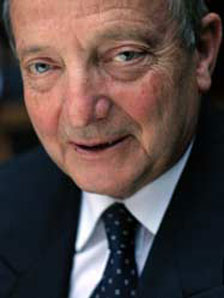Mario Mancini
Year: March 17th, 2004
Location: Minneapolis, Minnesota
Interviewed by: Blackburn, Henry
Abstract
This visit with Prof. Mancini is mainly a chronology of his career, indicating the influence of his early visit to Minnesota and his extensive scientific contacts that have enriched his activities. These include active collaborations with Lars Carlsson on a monograph series on atherosclerosis, his work with Barry Lewis and G. Assmann in joint prevention recommendations to the European Society of Atherosclerosis, and with Jerry Stamler on the Journal of Nutrition and Metabolism. His early experience led him to pioneering in nutrition in Europe and lasting influence on the practice of preventive cardiology. He successfully resisted becoming a CVD epidemiologist. (Henry Blackburn)
Quotes
MM: I do believe that it [a year in Minnesota] has been for me fundamental in my career development and way of thinking. Because I decided when I went back to Italy to be a physician but with an interest in nutrition. That was a great novelty, I’ll say, in medicine at that time. Nobody believed. I have worked against the current because nobody believed that nutrition could have any role in therapeutics. Nobody. Everybody was laughing because everybody was expecting a new drug and I said, “This is very important.” And, of course, I realized that nutrition is the base for many metabolic diseases that, by the way, at that time started to rise from obesity to diabetes to hypertension and to thrombotic tendencies. So I had in mind a kind of star with nutrition in the middle and various arrows to these different pathological conditions. And I started to realize the pathogenesis of atherosclerosis was multi-factorial. This has been already said here many times, but when I went back with calm and meditation I could see that. (7)
And I was interested in taking a picture of obese Chinese. I said, “Look,” this was 1980, “Buddha was fat. We see Chinese in America who are fat. Must be somebody fat here.” It was impossible, believe me, to take a picture of one obese Chinese and we went from Hong Kong to Peking. In three weeks time 18 people who were seeking around there was not one Chinese overweight and I was impressed, really I was impressed. So I was tempted only to take pictures of Buddha in various churches and in the Museum of the Mandarin that were obese.
HB: Well, you made the same conclusion that Ancel did, years earlier. That culture determines obesity and its complications.
MM: Yes, indeed. So I thought this must depend on the way they live. And, in fact, I inquired about it. Everybody told me that the average Chinese worker was cycling 25 kilometers a day and, of course, I was invited into the kitchen and I saw ingredients of their rice, the vegetables, very little oil that was coming from…
HB: Sesame oil.
MM: Yes, something like that. Very little. Some fish, some poultry, but very little. Protein less than 6%. So I returned with many pictures and I showed them to various congresses that China is without obesity because they work a lot – more in the south even more than the north in China. In the south the carriage not by quadrapeds, by horse, but by 7-8 people. The boats on the river. Interesting, the boats on the river were moving by long iron cables and 20 people on the side to pull. This was the type of physical exercise at that time.
HB: It’s changing now. (19)
Full Transcript Access
Full transcripts of interviews may be made available to those engaged with original materials for scholarly studies by contacting us.
